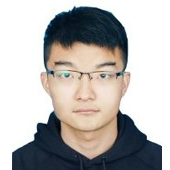Information Network Mining and Applications
A special issue of Entropy (ISSN 1099-4300). This special issue belongs to the section "Information Theory, Probability and Statistics".
Deadline for manuscript submissions: closed (30 September 2023) | Viewed by 25895
Special Issue Editors
Interests: textual data mining; knowledge graphs; graph representation learning; code understanding and representation
Special Issues, Collections and Topics in MDPI journals
Interests: data mining; graph neural networks; graph representation learning; recommendation system; network embedding
Special Issues, Collections and Topics in MDPI journals
Interests: data management; data mining; cohesive subgraph searching; graph embedding; graph neural networks; keyword searching; trajectory computing
Special Issues, Collections and Topics in MDPI journals
Special Issue Information
Dear Colleagues,
Information networks, also known as heterogeneous graphs, linguistics graphs, social networks, knowledge graphs, and so forth, which are able to consist of different types of entities and relations, have been attracting substantial attention in academia and industry in recent years. Advanced research on information network theory is essential to address the issues that relate to the structure modeling, representation, and applications of more complex, high-order information networks. Additionally, deep learning models on information networks have achieved remarkable performance in various tasks (e.g., graph representation learning, graph generation, and graph classification) when applied to domains such as knowledge graphs, social networks, bibliographic networks, traffic networks, and molecules. Despite these successes, as a promising network analysis paradigm, information network mining also is facing new challenges, such as how to manage typical networks such as multi-modal, multi-relational, and dynamic graphs, how to efficiently learn network/graph representation of large-scale information networks for preserving rich structural and semantic information, how to learn with limited labels on information networks, and how to mine knowledge in the information network, which is also of significance in solving sophisticated problems with more promising performance.
This Special Issue is a forum for researchers from a variety of fields working on mining and learning from information networks to share and discuss their latest findings. It welcomes original algorithmic, methodological, theoretical, statistical, or systems-based contributions to information network research and, in particular, applications broadly related to knowledge graphs, social networks, stock prediction, online shopping, recommendation systems, self-driving car, bioinformatics and medical informatics. Research papers and comprehensive reviews may focus on (but are not restricted to) the following research areas:
- Network/graph representation learning for homogeneous or heterogeneous information networks;
- Network/graph modelling like multi-modal, multi-relational, and dynamic graphs;
- Graph transformer and graph convolutional neural network;
- Data mining based on knowledge graphs, linguistics graphs, bibliographic graphs, textual graphs, social networks, traffic networks, and molecules;
- Parallel computing for information network analysis;
- Visual searching and browsing of information networks;
- Applications of information network mining in e-commerce, text mining, stock prediction, recommendation systems, self-driving car, bioinformatics and medical informatics, and so on;
- Information networks for explainable AI.
Dr. Yongpan Sheng
Dr. Hao Wang
Dr. Yixiang Fang
Guest Editors
Manuscript Submission Information
Manuscripts should be submitted online at www.mdpi.com by registering and logging in to this website. Once you are registered, click here to go to the submission form. Manuscripts can be submitted until the deadline. All submissions that pass pre-check are peer-reviewed. Accepted papers will be published continuously in the journal (as soon as accepted) and will be listed together on the special issue website. Research articles, review articles as well as short communications are invited. For planned papers, a title and short abstract (about 100 words) can be sent to the Editorial Office for announcement on this website.
Submitted manuscripts should not have been published previously, nor be under consideration for publication elsewhere (except conference proceedings papers). All manuscripts are thoroughly refereed through a single-blind peer-review process. A guide for authors and other relevant information for submission of manuscripts is available on the Instructions for Authors page. Entropy is an international peer-reviewed open access monthly journal published by MDPI.
Please visit the Instructions for Authors page before submitting a manuscript. The Article Processing Charge (APC) for publication in this open access journal is 2600 CHF (Swiss Francs). Submitted papers should be well formatted and use good English. Authors may use MDPI's English editing service prior to publication or during author revisions.
Keywords
- information networks
- network/graph representation learning
- data mining
- knowledge graphs
- information network applications
- explainable AI








